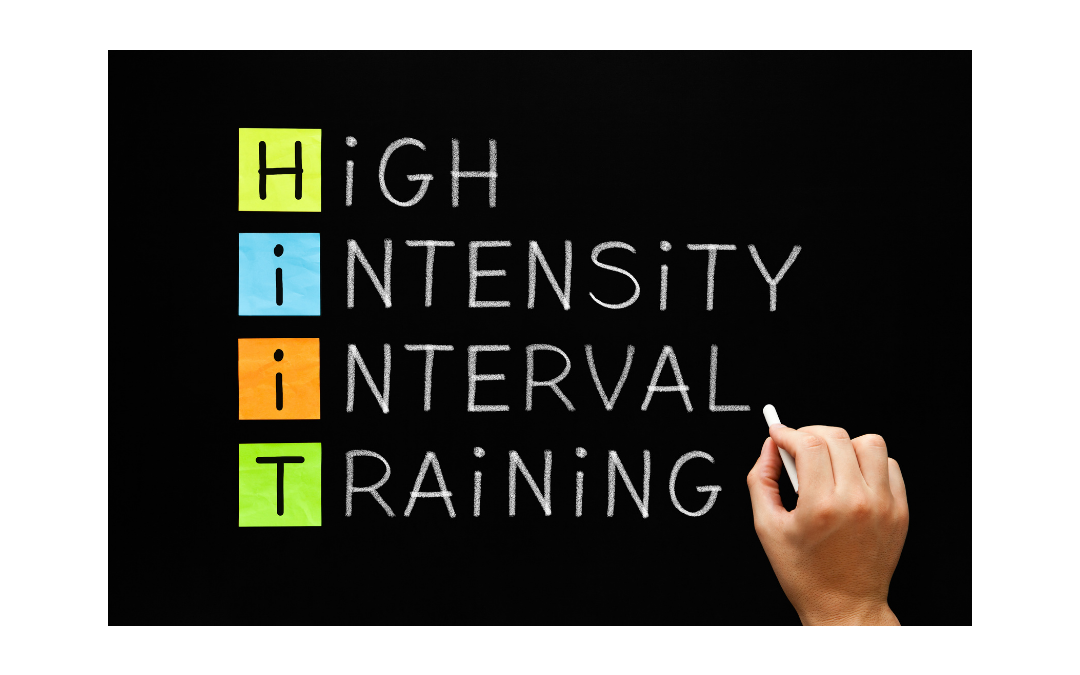Time. There never seems to be enough of it for what we need and want to do each day. What if I told you that you can get twice the workout in half the time? If it sounds too good to be true, then you haven’t heard about High Intensity Interval Training, or HIIT. Getting 30 or 60 minutes of exercise into each day means letting go of other priorities (like sleep, family time and leisure). If we do carve out time in our schedules to exercise, we often struggle to stay motivated to get in a full bout of vigorous activity. It’s not surprising. Our brains are wired to help us avoid suffering!
The trick is to trick the mind into looking forward to physical activity. This can be done by choosing exercise routines we enjoy (dance, hiking, etc.) but also by strategically engineering our workouts to get the biggest return from the shortest amount of time. Knowing we can swap an hour-long slog of a workout with a mentally manageable 20-minute workout can be the difference between frustration and success.
As noted in this article from the American Council on Exercise, one of the most common misperceptions about exercise is that a person has to spend hours sweating buckets in order to reap the benefits. We all know those marathon runners who really do sweat buckets to stay so fit but most of us just want to get into a routine that helps us look and feel better and improve our health in the process. HIIT is just the ticket.
What is HIIT?
HIIT involves alternating higher-intensity activity with intervals of lower-intensity activity. The idea is to get your heart rate up for a short period of time (work phase) and then slow down for a short period of time (recover phase). Intervals can be 1:1, 1:2, or 1:3. For example, you can alternate jogging for 1-minute and walking for 1-minute (1:1), jog 1-minute and walk 2-minutes (1:2) or run 15 seconds and walk 45 seconds (1:3). The key is to start with a cycle that you know you can stick with and build from. For a beginner, that could be as little as 4 minutes of brisk walking or jumping jacks for 15 seconds, followed by 45 seconds marching in place.
Cycling through intervals for as little as 10 minutes can provide similar benefits of a 30-minute sustained activity depending on the intensity levels. A good way to measure exercise intensity is by using a rate of perceived exertion (RPE), with 1 being very low intensity and 10 being the highest level of intensity you can manage. An effective workout should have at least a 5-minute warm-up, a minimum of five high-intensity work intervals and a cool down. As a general rule, the warm-up would be around a 3-4 RPE, with work phase between 8-10 RPE and rest/recovery phase around 5-6 RPE.
There are many benefits to HIIT training, including improved heart health and better endurance, but one of the most important benefits is psychological. HIIT workouts are both physiologically and psychologically easier. Building rest breaks into a short workout make it much easier to begin and stick with a regular exercise habit.
HIIT examples
- Walking or jogging as fast as you can and then walking at a leisurely pace
- Calisthenics – alternating short bouts of jumping jacks, push-ups, squats and lunges with marching in place
- Swimming one lap as fast as possible with a recovery lap in between
- Select the Interval Training or Hill Climb option for Treadmill, Elliptical or Rowing machines
- Set up a dance play list with alternating fast and slow songs
HIIT can be safe and effective at any age or fitness level. To learn more about how high-intensity interval training can even be more effective for older adults, read this article from the Mayo Clinic. If you have health concerns, be sure to check with your doctor before starting a new exercise routine.
AUTHOR: Michelle Jenck, Adventist Health Tillamook Director of Community Wellbeing and TCW Coordinator
For more local health and wellness information, follow Tillamook County Wellness on Facebook, Instagram and Twitter.

